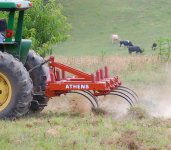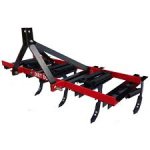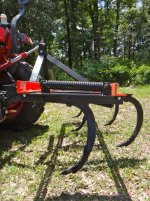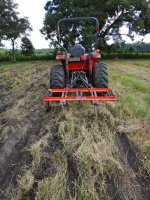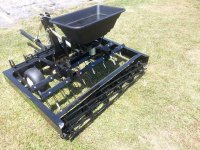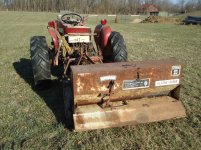jeff9366
Super Star Member
- Joined
- Jan 14, 2011
- Messages
- 12,386
- Tractor
- Kubota Tractor Loader L3560 HST+ ~~~~~~~~~~~~~ 3,700 pounds bare tractor, 5,400 pounds operating weight, 37 horsepower
However, I am not big into tilling. Is there a method for minimun tillage? What sort of equipment would do the least amount of soil damage?
What do people use these disc attachments I see all over for?
Disc Harrows are one form of soil mixing tiller. A PTO powered roto-tiller is a second form of soil mixing tiller. Both equipments can be adjusted for shallow soil penetration but general soil mixing occurs across width of implements.
LINK: http://www.tractorbynet.com/forums/...ing-three-point-hitch-mounted.html?highlight=
The main conservation plows is the Chisel plow or its lighter brother, the Field Cultivator. Tines are pulled through the soil, leaving some vegetation on top to prevent top soil from blowing away. You can pull a four tine Field Cultivator with an L3901, possibly, not definitely, a five tine Field Cultivator } $900. Many would opine aeration provided by a Chisel or Field Cultivator improves soil productivity.
VIDEO: How to Use a Ripper / Field Cultivator - Gardening Series - YouTube
If your tractor could handle a heavy drill you are back to the optimal no till combination: very low cut with a Rotary Cutter, then a drill for seeding. BUT....do not let the perfect become the enemy of the good. You have had a ton of GOOD, DIVERSE, options suggested in this thread.
Photo #1 Chisel plow, Photo #2, #3, #4 Field Cultivator, AKA: All Purpose Plow
Attachments
Last edited:
